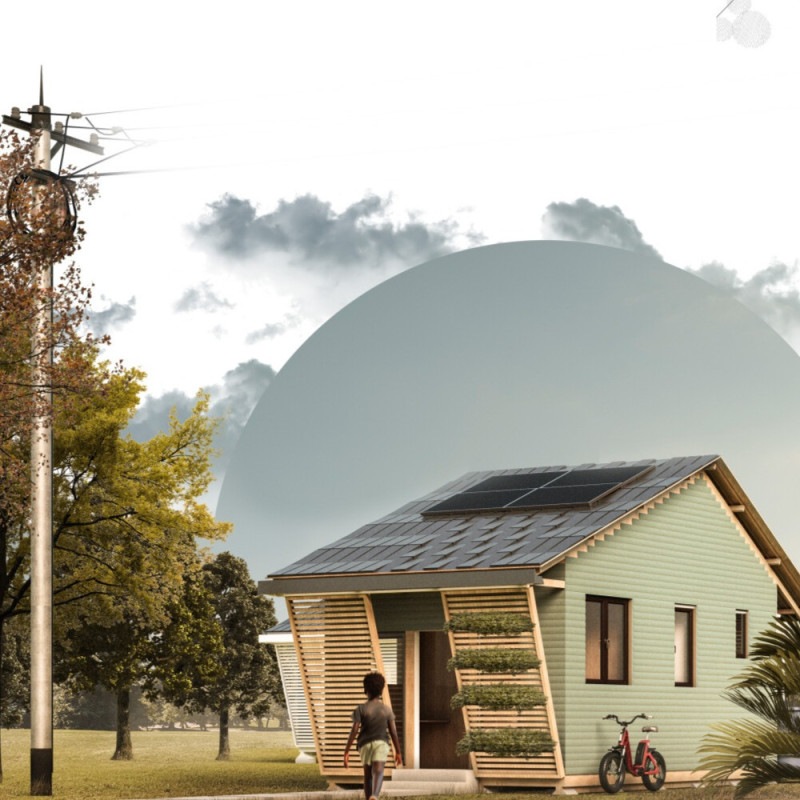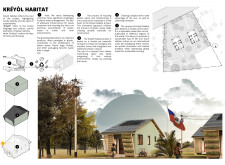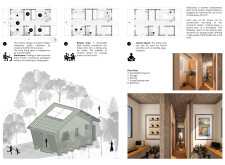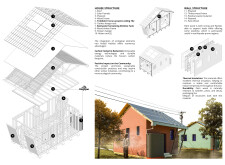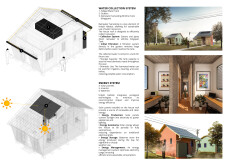5 key facts about this project
### Overview
The Kréyòl Habitat is located in Haiti and addresses the country's ecological and infrastructural challenges through a thoughtful architectural design. The project emphasizes sustainability and cultural preservation while aiming to improve community well-being. "Kréyòl," inspired by Haitian identity, highlights the importance of cultural expression within modern living environments, while "Habitat" signifies a contemporary approach to dwelling.
### Spatial Strategy and Functionality
The design utilizes a compact footprint of 25 square meters, maximizing the efficiency of available space through modularity and multifunctional areas. Retractable furniture facilitates flexible transitions between work, dining, leisure, and living spaces, addressing the diverse needs of residents. The interior layout is configured to enhance usability while maintaining a comfortable living environment.
### Materiality and Sustainable Practices
The construction incorporates innovative materials and techniques that reflect a commitment to environmental responsibility. Walls and roofing are constructed from plywood and palm wood, chosen for their durability and low environmental impact. A novel insulation system employing recycled plastic waste exemplifies the project's focus on waste reduction. In addition, solar panels are integrated to harness renewable energy, while a rainwater harvesting system significantly decreases reliance on potable water resources. These elements collectively support a strategy aimed at minimizing the ecological footprint of the habitat.


